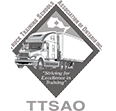Preparing Your Freight to Minimize Damage
Preparing Your Freight for Transport
Carton Quality - Choose the right carton. It is important that you confirm your packaging is safe and can withstand transportation and handling. Ensure your carton has no voids. Cartons that are not completely filled with material are susceptible to crushing. Loose fill any carton voids to avoid carton crushing.
Pallet Quality - Use good pallets. Place your items to be shipped onto an approved pallet that is in good condition without broken or missing stringers.
Building the Pallet - Stacking the freight on the pallet: The orientation of cartons in your palletized freight shipments can have a big impact on the integrity of your shipments.
Column Stack - Column-stack loads for palletized freight. In almost all cases it increases the top-to-bottom compression strength for most palletized shipments.
Interlocking Stack - If the carton contents are rigid, such as pails of paint, interlocking cartons will result in increased stability. Stack boxes corner-to-corner and edge-to-edge, for better stacking strength.
Overhanging Stack - Don’t overhang the pallet with packaged products, because it can reduce compression strength by as much as 32 percent, plus it subjects packages to tears, punctures and other impacts due to normal handling.
Pack Evenly - Pallets not stacked evenly dramatically increase the chances of damage through normal handling as a result of crushing, tipping and contact with other freight.
Load Protectors and Edge Boards - Top and bottom load-protector pads (corrugated pad/tray) help reduce damage to top and bottom layers of your shipment. They also help distribute the weight of top-loaded freight. Bottom load protectors provide a level surface and help keep boxes from slipping into the gap between the boards on the pallet. Corner or edge boards should run the full length of the stack to help stabilize the load, increase vertical stacking strength and reduce damage to box edges that make up the load corners.
Void fillers - Use void fillers such as honeycomb sheets or bars in order to add support to small stacks and provide a level surface. This will help limit the cartons to potential damage from stacking. Pallets with a level surface provide better strength and stability for even load and weight distribution when double-stacked.
Banding - Banding is typically used to secure the bundled load to the pallet. You should band corrugated stacks on all sides. As a general rule, keep the banding close to the load to avoid exposure, damage or breakage.
Stretch wrap - If you have not strapped the pallet, be certain that the cartons are as close to one another on the pallet as possible. If they have room to shift around after you’ve applied the shrink wrap the entire unit will become loose and ineffective. Stretch wrap film is critical for bundling loads and also for securing and protecting large individual pieces of freight. Wrap freight tightly to prevent load shifting.
For further details on carton configuration and strength as well as how to properly apply shrink wrap to products and skids consult the APPS Transport shipping guide.
APPS is an active member of the business community with memberships and affiliations with many industry, business and governmental bodies including:










